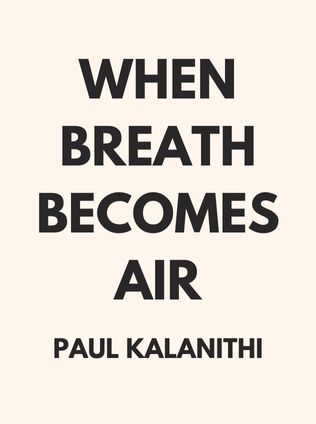
Ageless
The Quantum Alternative to Growing Old
By Andrew Steele
Published 12/1994
About the Author
Andrew Steele, a physicist-turned-biologist, embarked on a transformative journey that led him from the rigorous world of physics to the equally challenging domain of biology. With a Ph.D. in physics from the prestigious University of Oxford, Steele's early career focused on the fundamental principles governing the universe. However, his intellectual curiosity and passion for understanding life in its most intricate forms soon drew him toward computational biology, a field where the complexity of life is decoded through the lens of data science. Steele's transition was driven by a profound realization: aging, not the mysteries of the cosmos, is the most critical scientific challenge of our time. His first book, Ageless, published in 2020, is a testament to his dedication to exploring the possibility of radically extending human life and healthspan. Steele's work is a clarion call for a new approach to aging—one that treats it as a condition that can be understood, modified, and potentially cured through scientific advancements.
Main Idea
In Ageless, Andrew Steele presents a groundbreaking argument that challenges the long-held belief that aging is an inevitable aspect of life. Steele posits that aging, far from being an unalterable fate, is a biological process that we can study, understand, and potentially reverse. Central to Steele's thesis is the idea that aging is the primary cause of the diseases that ultimately claim our lives—heart disease, cancer, dementia, and many others. By addressing the root causes of aging, Steele argues, we can develop interventions that not only extend our lifespan but also enhance our healthspan—the period of life spent in good health. Steele's work is both a scientific exploration and a visionary manifesto, advocating for a future where the debilitating effects of aging are no longer a given but a challenge that humanity can overcome.
Table of Contents
- What is Aging?
- Common Myths About Aging
- Biological Processes Behind Aging
- Can We Cure Aging?
- Ethical Implications of Curing Aging
- Preventative Measures for Aging
- Conclusion
What is Aging?
Aging, as defined by Steele, is the process that leads to the gradual decline of our health, making us more vulnerable to diseases and ultimately leading to death. Steele argues that aging is not merely a consequence of time passing but a series of biological processes that deteriorate our bodily functions. These processes increase our susceptibility to chronic diseases such as heart disease, cancer, and neurodegenerative conditions like dementia. Steele's key insight is that aging itself is the root cause of approximately two-thirds of deaths globally. He suggests that if we can intervene in the biological mechanisms that drive aging, we can significantly reduce the incidence of these diseases and extend both our lifespan and healthspan.
Common Myths About Aging
Steele addresses several common misconceptions that hinder our understanding of aging and its potential for modification. One of the most pervasive myths is the belief that aging is an inevitable part of life. This fatalistic view, Steele argues, limits our ability to envision and pursue scientific solutions to aging. He challenges the notion that aging is a natural process that cannot be altered, proposing instead that by understanding the biological causes of aging, we can develop strategies to slow, reverse, or even prevent it.
Another myth Steele debunks is the idea that the goal of anti-aging research is to achieve immortality. Steele clarifies that the true objective is not to live forever but to become "ageless"—to maintain good health for as long as possible, with our risk of death no longer being tied to our chronological age. This distinction is crucial, as it shifts the focus from an unrealistic pursuit of eternal life to a more practical and achievable goal: extending the period of life spent in good health and reducing the burden of age-related diseases.
Biological Processes Behind Aging
Steele delves into the various biological processes that contribute to aging, categorizing them into three main groups: the accumulation of harmful substances, the degradation of crucial systems, and the deterioration of cellular structures and signals. These processes, while complex, provide a roadmap for understanding how aging occurs and, more importantly, how it might be mitigated.
Accumulation of Harmful Substances
One of the key contributors to aging is the buildup of harmful substances within the body. Steele highlights two significant examples: senescent cells and malfunctioning proteins.
- Senescent Cells: Senescent cells are damaged or stressed cells that have stopped dividing but have not died. While these cells can play a protective role by preventing the proliferation of potential cancer cells, their accumulation over time leads to negative consequences. These cells emit inflammatory signals that damage surrounding tissues and contribute to the aging process. Steele discusses emerging interventions, such as senolytic treatments, which aim to selectively induce the death of senescent cells. These treatments hold promise for reducing the harmful effects of senescent cells and slowing the progression of age-related diseases.
- Malfunctioning Proteins: Proteins are essential building blocks of the body, but as we age, they can malfunction and accumulate, leading to diseases. For example, amyloids—misfolded proteins—can form plaques in the brain, contributing to neurodegenerative conditions like Alzheimer’s and Parkinson’s disease. Steele explores potential treatments that involve the use of antibodies to clear amyloids from the body or drugs that enhance the body's natural protein recycling processes. These approaches could help reduce the buildup of malfunctioning proteins and mitigate their detrimental effects on health.
Degradation of Crucial Systems
As we age, several vital systems in our body begin to degrade, leading to significant health issues. Steele identifies three critical systems that are particularly affected by aging: stem cells, the immune system, and the microbiome.
Sign up for FREE and get access to 1,400+ books summaries.
You May Also Like
The Subtle Art of Not Giving a F*ck
A Counterintuitive Approach to Living a Good Life
By Mark MansonRich Dad Poor Dad
What the Rich Teach Their Kids About Money - That the Poor and Middle Class Do Not!
By Robert T. KiyosakiHow To Win Friends and Influence People
The All-Time Classic Manual Of People Skills
By Dale Carnegie



















